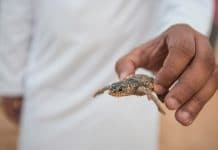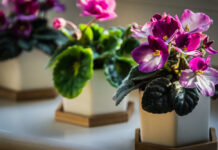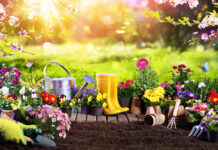When it’s time to escape for some much-needed R&R, how do you care for your gardens and indoor plants? Ensuring your plants stay healthy while you’re away is easier than you might think. Start by assessing the specific water and light requirements for your various plants. While hardy succulents can thrive with minimal attention, herbs, vegetables, and many houseplants will need a bit more care to keep them thriving while you’re gone. With a bit of planning and the right tools, you can ensure your plants stay healthy and hydrated while you enjoy your vacation.
The type of pot your plant is in plays a significant role in its watering needs. Terra cotta pots tend to dry out faster than glazed ceramic or plastic ones. Additionally, smaller pots, especially those under six inches in diameter, don’t retain moisture as well as larger pots. Consider using a product like Soil Moist to help reduce the frequency of watering. The granules in Soil Moist can hold more than 200 times their weight in tap water and gradually release it to your plants, cutting the number of waterings needed by 50 percent.
For houseplants, a simple solution is to group them together in the kitchen sink or bathtub filled with a few inches of water. Place a towel on the bottom to keep the pots from scratching the surface and remove the saucers so the plants can wick the water up through the drain holes. This should keep them hydrated for a week to 10 days. Additionally, move indoor potted plants away from sunny, south-facing windows because water evaporates more quickly in warm temperatures and direct sunlight. For potted plants, you can also take a pencil and stick it in the soil. When you remove it, fill the hole with soil moisture granules, which, after watering, will serve as a water reservoir for your plants.
Outdoor plants can also be grouped together and placed in a kiddie pool, preferably in the shade. You can even set up a sprinkler on a timer to water them regularly if you’ll be gone for an extended period.
Another option is to set up a wicking system that goes from a water bucket to each plant. Cut a piece of cotton rope and place one end close to the plant a few inches below the surface of the soil, taking care not to disturb the roots. Rest at the other end of the rope in the bottom of your filled water container. The cotton rope will slowly wick water from the container into the pot, maintaining a constant level of moisture in the soil.
You can also create a self-watering system with plastic one or two-liter bottles. Punch a few holes in the cap, fill the bottle with water, flip it over and bury the cap in the potting soil. As the soil dries out, water will slowly seep out. A wine bottle does the same trick—just hold your thumb over the top as you invert it into the dirt.
Have you been to Down to Earth Living? This gracious outdoor living furnishings and beautiful home decor store is located at 1040 Route 45 in Pomona, New York (Rockland County), a short drive from Bergen, Orange, Westchester, and Fairfield Counties.
The garden center at Down to Earth Living is filled with perennials, flowers, shrubs, and trees, with new arrivals coming in every week. The 10,000 square foot showroom has an incredible selection of contemporary, classic, traditional, and transitional teak, aluminum and all-weather dining and deep-seated furniture, as well as home décor.
Down to Earth Living is open 9:00 am-5:00 pm daily. For more information, call 845-354-8500 or visit dtliving.com.
Choosing the right outdoor furniture for your home…












